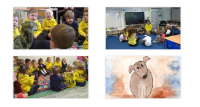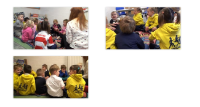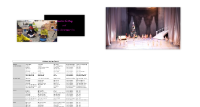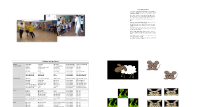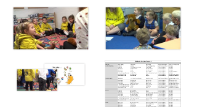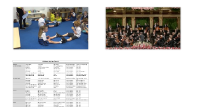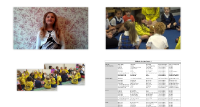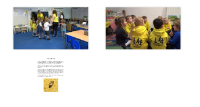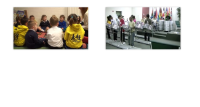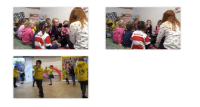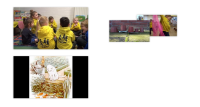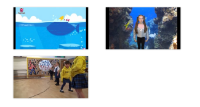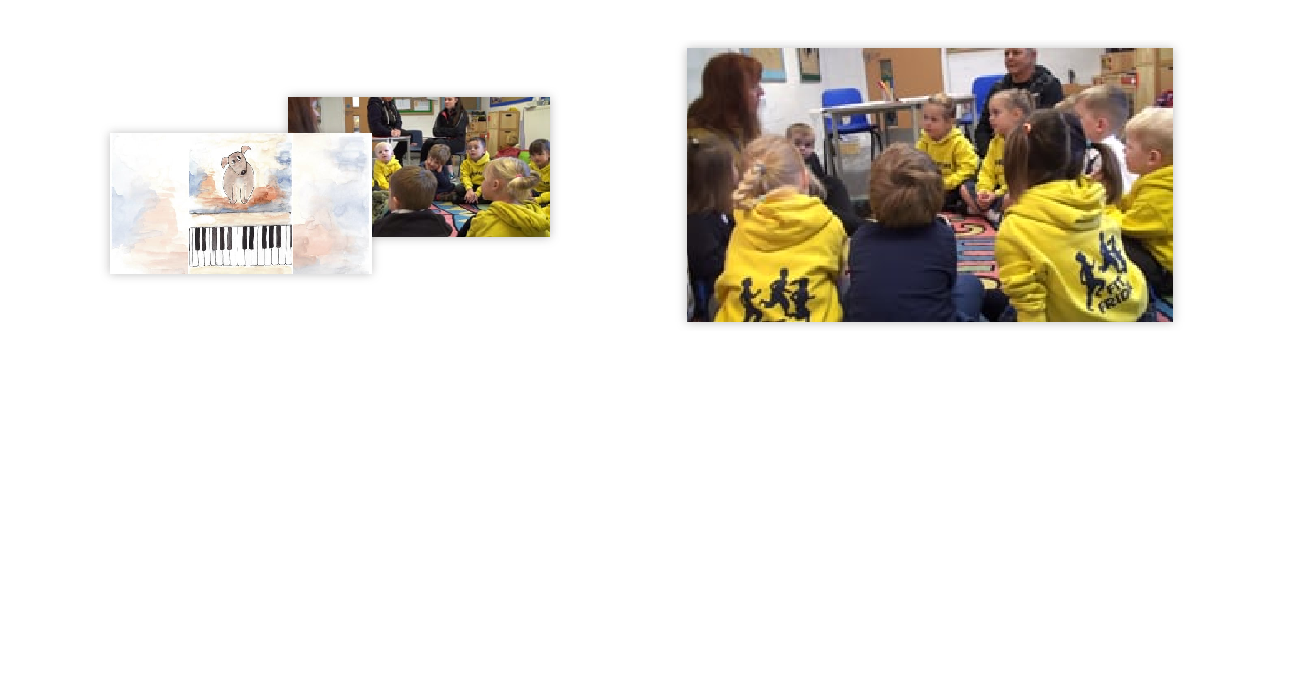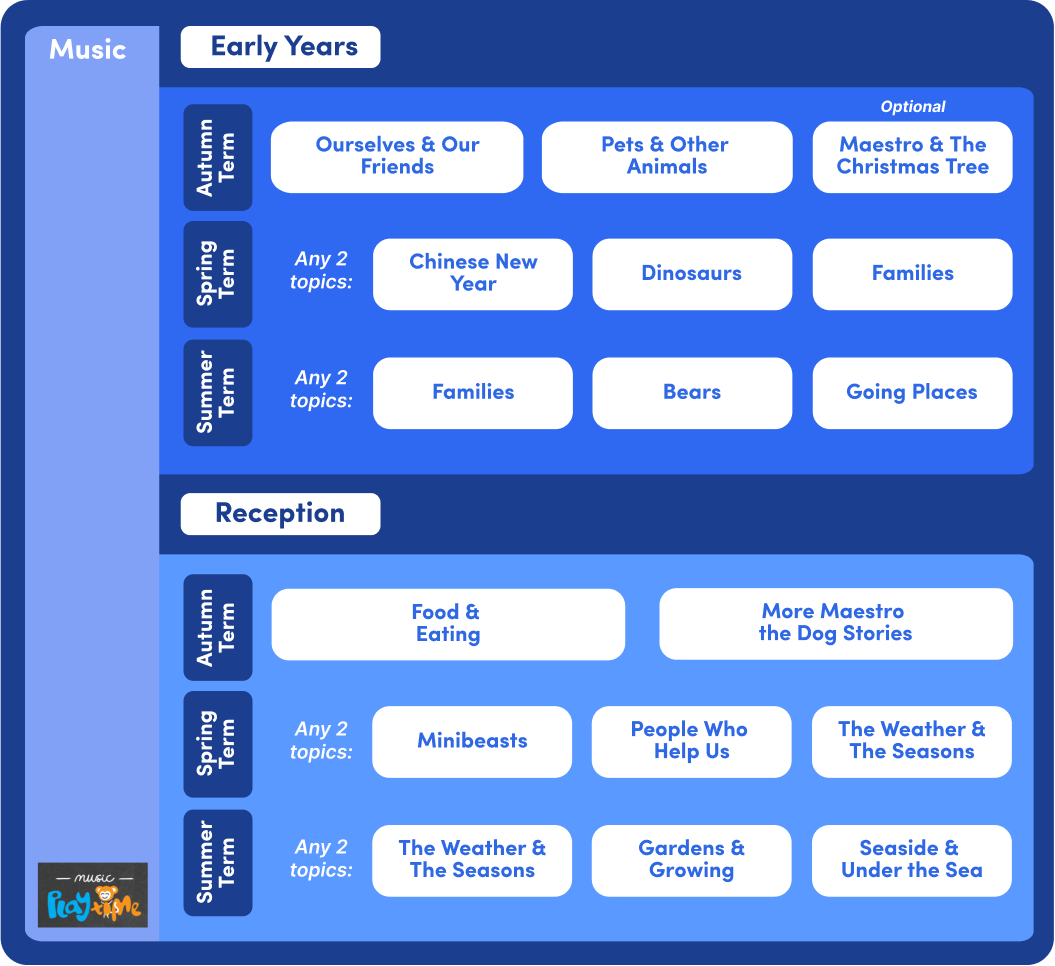More Maestro the Dog Stories Level: Early Grades
Music Unit Description
Using tuned instruments, including keyboards, in relation to the Maestro the Music Dog story
Elements
- Pitch: High pitched and low pitched sounds.
- Duration: Long or short notes, RHYTHM.
- Dynamics: Louder or quieter sounds.
- Texture: A single sound, or combined sounds.
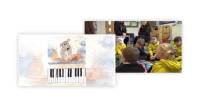
Maestro the Music Dog
The original story about Maestro the Music Dog, who lived on top of Hannah's piano. When Hannah did her piano practice she liked Maestro to listen to the tunes she made up.
The Music Dog Goes Round and Round
A little passing-round-the-ring song. Mrs Crocosaurus is joining in the singing!
- All Maestro the Music Dog materials ©E-MusicMaestroPublishing Limited
- Original watercolors and story: Sandy Holland
- Original music: Peter Noke
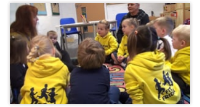
Did You Hear Maestro Say ... ? (tempo, dynamics, pitch)
This song is great for reinforcing the elements, tempo (speed), dynamics (loud and quiet) and pitch (high and low). I think it's best to do the actions right from the start of each verse so that the children can start copying them as they sing, and then follow the instruction for loud/soft fast/slow high/low.
- Did you hear Maestro say
- Clap your hands for today?
- Teacher loudly: clap them loud! (Children clap loudly)
- Teacher quietly: clap them soft! (Children clap quietly)
- __
- Did you hear Maestro say
- Stamp your feet for today?
- Teacher loudly: stamp them loud! (Children stamp loudly)
- Teacher quietly: stamp them soft! (Children stamp quietly)
- __
- Did you hear Maestro say
- Tap your knees for today?
- Teacher loudly: tap them loud! (Children tap loudly)
- Teacher quietly: tap them soft! (Children tap quietly)
- __
- Did you hear Maestro say
- Roll your hands for today?
- Teacher quickly: roll them quick! (Children roll hands quickly)
- Teacher slowly: roll them slow! Children roll hands slowly
- __
- Did you hear Maestro say
- Wave your arms for today?
- Teacher quickly: wave them quick! (Children wave arms quickly)
- Teacher slowly: wave them slow! (Children wave arms slowly)
- __
- Did you hear Maestro say
- Make a silly sound today?
- Teacher in high voice: make it high! (Children make a silly, high-pitched sound)
- Teacher in low voice: make it low! (Children make a silly, low-pitched sound)
Improving the singing
At one point here I say, 'I think we can get that a little bit better!' The problem, as I taught the song, was a lapse in concentration so I drew the focus back by giving specific instructions to look at me and listen, which was enough to produce better singing. This was one of our first sessions and the children were still finding it interesting being filmed, as you can see! It's a long, quite demanding song and, had I been in an ordinary classroom situation without needing to record more of the song for Music Playtime, I would have stopped sooner and come back to the song another day.

- All Maestro the Music Dog materials ©Music-Playtime: Arts Enterprise Limited
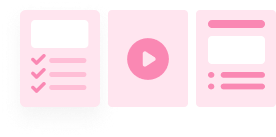
Using Keyboards
All the activities here are for supervised individual children or pairs of children. A keyboard or piano is ideal but a large sized xylophone has low-pitched notes and would be a good alternative.
Lots of Notes and One-at-a-Time Notes (texture, dynamics)
Just like Hannah, the children can experiment with playing lots of notes (thick texture) at the same time, and then playing some notes one at a time (thin texture). They can try playing loudly and quietly too. There's no reason not to use the correct, elements of music words to describe what the children are doing - they will eventually pick up the meaning through the context and through doing if the words are used frequently enough.

Make Low-Pitched Whale Music (pitch, dynamics)
Most children first think that low means low volume, not low pitch, but it's nothing to do with loud or quiet. You will almost certainly need to explain which are the low notes by asking the children to experiment and listen because, on a keyboard or piano, all the keys look the same and it's not obvious that the low notes are to the left and high notes are to the right.
What to do - Using both hands, the children play low-pitched notes slowly and rock gently from side to side as if under water. Once they get the idea of low pitch, you can then ask for low and quiet or low and loud. It's ok to introduce the correct word, dynamics for loud and quiet at this point.

Make High-Pitched Monkey Music (pitch, tempo)
Still using the piano, keyboard or tuned percussion instrument, the children play high notes this time, quickly like a little monkey running around. Again, you could talk about a fast tempo so that the children learn the meaning of tempo through doing and through context.
All Maestro the Music Dog materials ©Music-Playtime: Arts Enterprise Limited

Maestro Dog Can Hear Me Play (rhythm, pitch)
In supervised pairs or individually, using a keyboard or piano, the children can do what Hannah did - play on one black key, one note per word, as they say:
- Maestro Dog can hear me play
- My tune has one note today

First the children play this with their right hand, then they play it with their left hand.
Next they play on two black keys, in any order. First they play on high pitched notes, then they play it on low pitched notes. Remember that children need help with identifying high and low pitch, as opposed to high and low dynamics (volume). It's not obvious on the piano because all of the keyboard looks the same!
- Maestro Dog can hear me play
- My tune has two notes today

Copy clap
The teacher or adult helper says and claps each of these phrases four times: Maestro Dog then Cheeky Monkey, and the children copy:

Making Up a Dog and Monkey Tune (rhythm, pitch)
When the children can clap the rhythms, they can experiment with playing them. It's better to use two chime bars, bigger chime bar D and slightly smaller chime bar F. for this activity instead of keyboards, otherwise children tend to play all the keyboard notes, one by one, and the result isn't singable. I suggest D and F because the notes make an easy pair for children to sing in tune.
The children make up a tune by choosing in which order they play notes D and F as they imitate the rhythm of the words, Mae-stro Dog and Chee-ky Mon-key. They can choose whether to say or sing the words as they play. Recording each child's attempt on your phone is quick and easy, children love to listen to themselves play, and it gives you evidence for your records if you need it.
Here's Robert's tune and, below it, Stephanie's tune, played on a big xylophone, which are much easier for small children to play than little xylophones. The bars near D and F had been removed so that the children could more easily hit the right ones! I had to teach the children first to bounce the beater right off the bar, otherwise the sound is dull.
All Maestro the Music Dog materials ©Music-Playtime: Arts Enterprise Limited

Listen Again
Now that the children have played the things that Hannah played using the keyboard or the piano, they will be interested in listening again to the sounds that Hannah made so this is a good time to replay the video. The listening will be much more focused this time.
Whale Music
Did the children know that whales sing to each other? Sounds move about four times faster in water than in air and it's the way whales talk to each other, sometimes across long distances. The children can listen to whale song here:
All Maestro the Music Dog materials ©Music-Playtime: Arts Enterprise Limited
The Whale Choir (pitch, timbre, structure, texture)
This is a fantastic opportunity for the children to experiment with making all sorts of 'Whale songs' using creative vocalisation. Work out with the children a hand-signal system whereby you can 'conduct' them as they improvise a whole piece of music by choosing high sounds, low sounds, clicks and whistles. Next divide the group into two: one group is the whale 'choir' and the other group, using floaty scarves, is the 'swimming whales' who move in imitation of the sounds. Perfect for a performance piece as part of an assembly or play about conservation of endangered species!

Not Without My Whale (literacy link)
A highly recommended book by Billy Coughlan and Villie Karabatzia, for Early Grades children.
Published by Maverick Arts Publishing ISBN 1848861826


Maestro the Music Dog
The original story about Maestro the Music Dog, who lived on top of Hannah's piano. When Hannah did her piano practice she liked Maestro to listen to the tunes she made up.
The Music Dog Goes Round and Round
A little passing-round-the-ring song. Mrs Crocosaurus is joining in the singing!
- All Maestro the Music Dog materials ©E-MusicMaestroPublishing Limited
- Original watercolors and story: Sandy Holland
- Original music: Peter Noke

Did You Hear Maestro Say ... ? (tempo, dynamics, pitch)
This song is great for reinforcing the elements, tempo (speed), dynamics (loud and quiet) and pitch (high and low). I think it's best to do the actions right from the start of each verse so that the children can start copying them as they sing, and then follow the instruction for loud/soft fast/slow high/low.
- Did you hear Maestro say
- Clap your hands for today?
- Teacher loudly: clap them loud! (Children clap loudly)
- Teacher quietly: clap them soft! (Children clap quietly)
- __
- Did you hear Maestro say
- Stamp your feet for today?
- Teacher loudly: stamp them loud! (Children stamp loudly)
- Teacher quietly: stamp them soft! (Children stamp quietly)
- __
- Did you hear Maestro say
- Tap your knees for today?
- Teacher loudly: tap them loud! (Children tap loudly)
- Teacher quietly: tap them soft! (Children tap quietly)
- __
- Did you hear Maestro say
- Roll your hands for today?
- Teacher quickly: roll them quick! (Children roll hands quickly)
- Teacher slowly: roll them slow! Children roll hands slowly
- __
- Did you hear Maestro say
- Wave your arms for today?
- Teacher quickly: wave them quick! (Children wave arms quickly)
- Teacher slowly: wave them slow! (Children wave arms slowly)
- __
- Did you hear Maestro say
- Make a silly sound today?
- Teacher in high voice: make it high! (Children make a silly, high-pitched sound)
- Teacher in low voice: make it low! (Children make a silly, low-pitched sound)
Improving the singing
At one point here I say, 'I think we can get that a little bit better!' The problem, as I taught the song, was a lapse in concentration so I drew the focus back by giving specific instructions to look at me and listen, which was enough to produce better singing. This was one of our first sessions and the children were still finding it interesting being filmed, as you can see! It's a long, quite demanding song and, had I been in an ordinary classroom situation without needing to record more of the song for Music Playtime, I would have stopped sooner and come back to the song another day.

- All Maestro the Music Dog materials ©Music-Playtime: Arts Enterprise Limited

Using Keyboards
All the activities here are for supervised individual children or pairs of children. A keyboard or piano is ideal but a large sized xylophone has low-pitched notes and would be a good alternative.
Lots of Notes and One-at-a-Time Notes (texture, dynamics)
Just like Hannah, the children can experiment with playing lots of notes (thick texture) at the same time, and then playing some notes one at a time (thin texture). They can try playing loudly and quietly too. There's no reason not to use the correct, elements of music words to describe what the children are doing - they will eventually pick up the meaning through the context and through doing if the words are used frequently enough.

Make Low-Pitched Whale Music (pitch, dynamics)
Most children first think that low means low volume, not low pitch, but it's nothing to do with loud or quiet. You will almost certainly need to explain which are the low notes by asking the children to experiment and listen because, on a keyboard or piano, all the keys look the same and it's not obvious that the low notes are to the left and high notes are to the right.
What to do - Using both hands, the children play low-pitched notes slowly and rock gently from side to side as if under water. Once they get the idea of low pitch, you can then ask for low and quiet or low and loud. It's ok to introduce the correct word, dynamics for loud and quiet at this point.

Make High-Pitched Monkey Music (pitch, tempo)
Still using the piano, keyboard or tuned percussion instrument, the children play high notes this time, quickly like a little monkey running around. Again, you could talk about a fast tempo so that the children learn the meaning of tempo through doing and through context.
All Maestro the Music Dog materials ©Music-Playtime: Arts Enterprise Limited

Maestro Dog Can Hear Me Play (rhythm, pitch)
In supervised pairs or individually, using a keyboard or piano, the children can do what Hannah did - play on one black key, one note per word, as they say:
- Maestro Dog can hear me play
- My tune has one note today

First the children play this with their right hand, then they play it with their left hand.
Next they play on two black keys, in any order. First they play on high pitched notes, then they play it on low pitched notes. Remember that children need help with identifying high and low pitch, as opposed to high and low dynamics (volume). It's not obvious on the piano because all of the keyboard looks the same!
- Maestro Dog can hear me play
- My tune has two notes today

Copy clap
The teacher or adult helper says and claps each of these phrases four times: Maestro Dog then Cheeky Monkey, and the children copy:

Making Up a Dog and Monkey Tune (rhythm, pitch)
When the children can clap the rhythms, they can experiment with playing them. It's better to use two chime bars, bigger chime bar D and slightly smaller chime bar F. for this activity instead of keyboards, otherwise children tend to play all the keyboard notes, one by one, and the result isn't singable. I suggest D and F because the notes make an easy pair for children to sing in tune.
The children make up a tune by choosing in which order they play notes D and F as they imitate the rhythm of the words, Mae-stro Dog and Chee-ky Mon-key. They can choose whether to say or sing the words as they play. Recording each child's attempt on your phone is quick and easy, children love to listen to themselves play, and it gives you evidence for your records if you need it.
Here's Robert's tune and, below it, Stephanie's tune, played on a big xylophone, which are much easier for small children to play than little xylophones. The bars near D and F had been removed so that the children could more easily hit the right ones! I had to teach the children first to bounce the beater right off the bar, otherwise the sound is dull.
All Maestro the Music Dog materials ©Music-Playtime: Arts Enterprise Limited

Listen Again
Now that the children have played the things that Hannah played using the keyboard or the piano, they will be interested in listening again to the sounds that Hannah made so this is a good time to replay the video. The listening will be much more focused this time.
Whale Music
Did the children know that whales sing to each other? Sounds move about four times faster in water than in air and it's the way whales talk to each other, sometimes across long distances. The children can listen to whale song here:
All Maestro the Music Dog materials ©Music-Playtime: Arts Enterprise Limited
The Whale Choir (pitch, timbre, structure, texture)
This is a fantastic opportunity for the children to experiment with making all sorts of 'Whale songs' using creative vocalisation. Work out with the children a hand-signal system whereby you can 'conduct' them as they improvise a whole piece of music by choosing high sounds, low sounds, clicks and whistles. Next divide the group into two: one group is the whale 'choir' and the other group, using floaty scarves, is the 'swimming whales' who move in imitation of the sounds. Perfect for a performance piece as part of an assembly or play about conservation of endangered species!

Not Without My Whale (literacy link)
A highly recommended book by Billy Coughlan and Villie Karabatzia, for Early Grades children.
Published by Maverick Arts Publishing ISBN 1848861826

